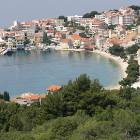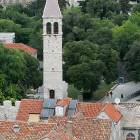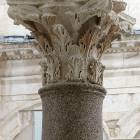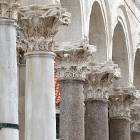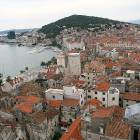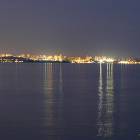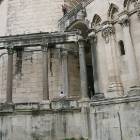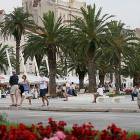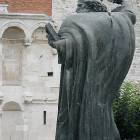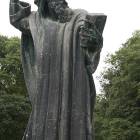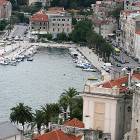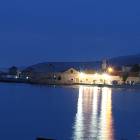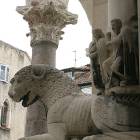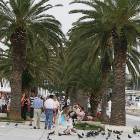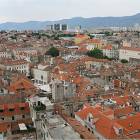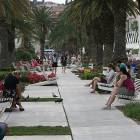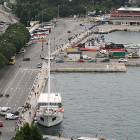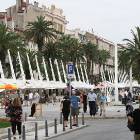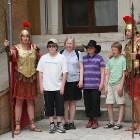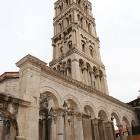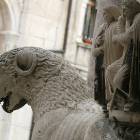Split, the place chosen by Roman Emperor Diocletian for his retirement seaside palace
Diocletian is known for his persecution against Christians, for building the largest public baths, splitting the Roman Empire into Western and Eastern (Byzantine) and for an unsuccessful attempt of stopping a giant economic crisis by reforming currency and even price controls. Diocletian is also the only Roman Emperor to have retired out of his own will. For his pension, after 21 years of ruling the greatest empire of his time, he chose Split, which is not far from the place he was born.
Split is the largest city and most important harbor of Dalmatia, found on the resort rich Croatian Adriatic shore. The palace of Diocletian was surrounded by heavy walls like a fortress and was large enough to host almost 10.000 people, which for antiquity standards meant a medium city. Diocletian was so found of this palace and of its gardens that he refused the pleads to come back on the throne in Rome. The palace survives to this day, but in a form that would make it unnoticeable to an unsuspecting visitor. Buildings from different ages, including modern banks and an underground shopping gallery were incorporated inside the palace walls and vaults. The mausoleum of Diocletian also took most of the yard, but that in turn was engulfed into what is today the most imposing building on that site – the Saint Dominus cathedral. It is a Romanesque cathedral with some beautiful statues and later Renaissance additions. The church bell can be climbed offering a complete panorama over the city, the peninsula and over the Adriatic shore. There is a very elegant place of promenade, shadowed by palm trees and elegant coffee shops.
As an emperor, Diocletian can be characterized as a precursor of the socialists. And not just for his aversion against Christianity, in which he saw a danger to imperial traditions and stability. He had, to be honest, inherited a desperate situation, as his predecessors used state funds for what we would call today „social welfare programs”. To finance those further, Diocletian too the same two methods: debasing the currency, by lowering the concentration of precious metal in every coin (thus creating inflation) and by raising the tax burden. Since people lost faith in the money issued by the imperial mint, many turned to barter of demanded higher prices. Diocletian went further, trying to impose fixed prices, regulating commerce and even forbidding peasants to leave their crops or forcing others to maintain the same job as their parents. Feudal servitude of the Middle Ages has its starting point in this period of decay.
As individual liberties decreased, the repression was mounting. The army doubled its size during Diocletian (from 200 to 400 thousand soldiers) and so did the aggressiveness of the tax collectors. The military took part in pressuring the population, turning to seizure of property, but was also a source of draining public funds, with more and more payed soldiers to be cared for. The same way grew the pomp with which the emperor was presenting himself, as a divine figure, son of Jupiter, in whose honor there is still preserved a temple inside the ruins of the palace. The courts-men would kiss the garments of the sandals of the emperor, and in the rare occasions when he would go out in public, the regular people could only bow their heads and salute. The inquiring one who would have raised his face to gaze an the divine emperor faced the capital punishment. This status marks a spectacular personal evolution for Diocletian, who was a professional general, born as son of a freed slave not far away from Split. The emperor remained spiritually bound his entire life to these sunny place where olive trees grow next to palm trees.
A large statue just outside the old city district harboring the palace represents Gregory of Nin. He was a Croatian version of Martin Luther, imposing with 500 years before the father of Reform the use of Croatian language in sermons and liturgies, instead of Latin, but without breaking from the Catholic Church.
Everywhere in the city and in surrounding Croatian cities you will find graffiti and signs of support for the local Hajduk Split football team. The team is famous for its rejection of the Nazi occupation, in a city that supported Tito’s Partisan movement. Ironically, club’s and Croatia’s coat of arms, the red and white chess pattern, originates in the symbol used by the opposite side, the fascist Ustashe movement. Sport is of paramount importance in a city also famous as birthplace of tennis player Goran Ivanisevic and other important athletes.
Not far from Split, at about half of hour drive, there is the district of Kastela, with its numerous sea resorts overlooking Split’s peninsula, and than the marvelous Trogir, one of the best preserved medieval cities in Europe.
- Home Page
start page - Architecture
landmark buildings - Sacred architecture
places of worship - Nature
landscape photography - Concert
performing artists - Christmas
Santa Claus pictures
- Jooble
jobs for photographers - Escape
an out of control blog - Merry Christmas
The best organizer of Christmas parties - Astro photo
Eclipse hunting and astrological photography

